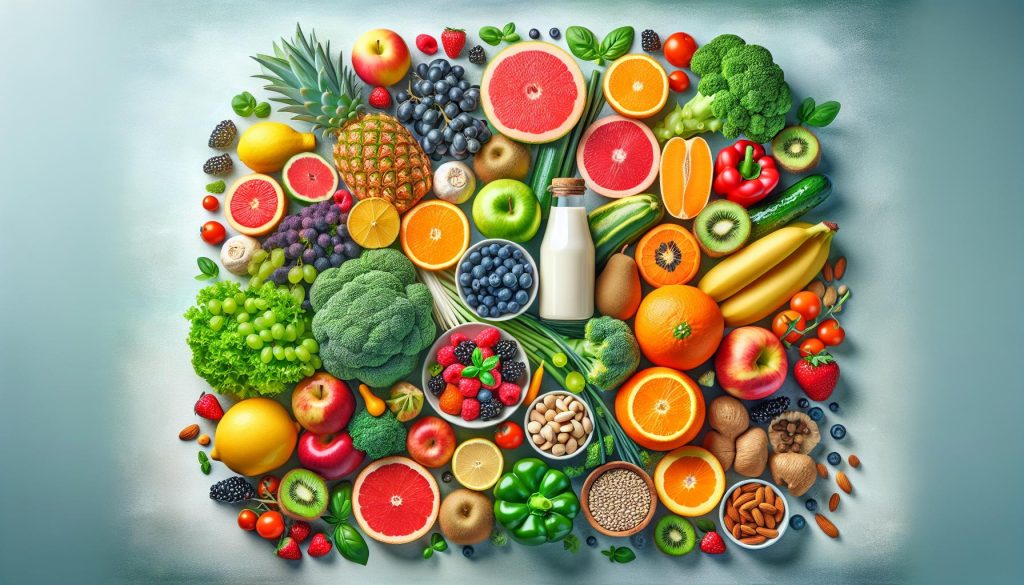
Introduction: How To Initiate an Alkaline Adventure
You’re probably here because the question, “how to start an alkaline diet?” has been buzzing around your brain recently. An alkaline diet is aimed at optimizing intake of foods and meals that are considered to be alkaline or basic, contrarily to acidic. This method high-protein foods, replacing them with fresh fruits, vegetables, root crops, and nuts.
The Alkaline diet has been the buzzword of health-conscious folks and fitness fanatics because it is believed to help maintain a balanced body pH. In simpler terms, the alkaline diet might help you achieve better overall health and vitality. Hang tight as we unravel the steps you can take to start an alkaline diet, what food gets a green light, and what to steer clear of.
Step 1: Discovering Alkaline Friendly Foods
The first and perhaps most essential step in starting an alkaline diet is getting to know your new food buddies: alkaline-enhancing foods. These are usually green leafy vegetables, root vegetables, citrus fruits, nuts, and legumes. Cucumbers and melons are also great additions to your alkaline-foods shopping list.
Fact or Fable: Are all fruits and vegetables alkaline?
Well, not exactly. If only it was that easy! Yes, a majority of fruits and veggies are alkaline, but not all of them are. For instance, blueberries, plums, and cranberries are among the few acidic fruits.
Step 2: Restructuring Your Meal Plans
Once you’ve met your new alkaline friends, it’s time to makeover your meal plans. Start divorcing from high protein, sugary, and processed foods, and invite more veggies, fruits, and nuts to the dinner table. Remember, small beginnings lead to big changes.
Quick Tip: Embrace Gradual Change
Switching up your diet isn’t a walk in the park. It takes patience and commitment. So take it slow. You don’t have to turn a new leaf overnight. Baby steps still move you forward.
Step 3: Hydrate with High pH Water
Drinking alkaline water, or high pH water, is another crucial step in your alkaline journey. Adding a slice of lemon or a pinch of baking soda to your water can make it more alkaline.
Should you drink only alkaline water?
Not necessarily. Too much of a good thing can be a bad thing. Strike a balance between alkaline water and your regular H2O.
Step 4: Monitor Your Progress
Development is not a destination but a journey. Track your body’s response to the diet change and adjust as necessary. Keep persevering, and you’ll begin to notice positive changes soon enough.
How to monitor your progress?
Simple home tests, like using litmus paper to measure your body pH, can help you monitor your progress. Regular health check-ups are also helpful.
Conclusion: Starting an Alkaline Diet Journey
Ahoy, there! You’re all set to embark on your alkaline diet journey. From acquainting yourself with alkaline foods to restructuring your meals, hydrating with high pH water, and keeping an eye on your progress, every step is a step towards attaining better health. Remember, the journey can be challenging, but it is also rewarding. So keep moving forward, one baby step at a time.
Frequently Asked Questions
Q1. Can an alkaline diet help with weight loss?
A. Although there’s no direct link, an alkaline diet can promote weight loss since it encourages healthier eating habits.
Q2. Can I still eat meat on an alkaline diet?
A. While you can still consume meat, it’s advisable to lessen its intake as meat is more acidic.
Q3. Is tomato a good part of an alkaline diet?
A. Yes. Even if tomatoes are slightly acidic, when metabolized, they leave an alkaline residue in our body and therefore, are a suitable candidate for an alkaline diet.
Q4. Is coffee allowed in an alkaline diet?
A. Coffee being acidic, is preferably avoided or reduced in an alkaline diet.
Q5. Can you eat rice on an alkaline diet?
A. White rice is acidic, but other types like basmati rice and brown rice are less acidic and can be included in an alkaline diet.



